The orange Austrian brand have finally brought a proper big bike to our shores in the 790 Duke, or the “Scalpel” as KTM like to call it. We hit the Bajaj test track outside Pune to put this nickname to the test.
Story: Anosh Khumbatta
Photography: Varun Kulkarni
Design and Style
There is no doubting this is a KTM. That vertically-split LED headlight, the sharp lines leading back from those aggressive tank shrouds, the slim, compact profile, and the liberal use of the colour orange make it amply clear. There’s also no bodywork on the bike beyond the tank, and this puts that all-new 799-cc parallel twin on display.
Powertrain and Performance
The compact DOHC motor is KTM’s first parallel twin till date. The company is known for their V-twins and singles and, to give this engine some of that loping V-twin character, KTM have incorporated a 75-degree crankpin offset for irregular 435- and 285-degree firing intervals. This is the same offset and firing order as their famous 75-degree V-twins, and the result is a lumpy idle, rorty exhaust note and instant acceleration, while a pair of counterbalance shafts keep vibrations to a minimum. Peak figures are 87 Nm at 8,000 rpm and 105 hp at 9,000 rpm, with the limiter kicking in at just under 10,000 rpm — more than enough to make the KTM 790 Duke an involving and lively ride. The bike accelerates hard through the midrange in each gear, while the close ratio six-speed geabox kept my left foot busy. Thankfully the two-way quickshifter works extremely well and I didn’t have to bother with the clutch or matching revs. With an indicated 227 km/h down the main straight, it’s clear that the KTM 790 Duke is no slouch.
Construction and Handling
The engine is a stressed member within the chromoly steel frame, while suspension duties are managed by WP, with a 43-mm USD telescopic fork up front and a swingarm-mounted monoshock. The only adjustability on offer is a preload setting at the rear, although both ends felt extremely well set up and damped for my weight — larger riders or those hoping for a cushy ride may not be as happy. The brakes on the 790 have been manufactured by Spanish company J.Juan, no stranger to high-performance braking systems, and consist of a pair of 300-mm discs gripped by KTM-branded four piston calipers and actuated by a radial master cylinder. The rear wheel gets a 240-mm disc with a single pot caliper, and steel-braided lines all around ensure consistent braking performance.
The KTM 790 Duke is extremely precise in the way it responds to steering inputs, the wide handlebar giving me the leverage and control to put the bike exactly where I wanted through the series of tight switchbacks, while the steering damper ironed out my aggressive inputs and kept twitchiness at bay. The sense of mid-corer stability is further enhanced by the long die-cast aluminium swingarm and generous 1,475-mm wheelbase, and the bike felt extremely planted while getting through the fast sections.
Electronics and Rider Aids
The KTM 790 Duke gets the most advanced electronics package in the segment with three basic rider modes, Rain, Street and Sport, a fully customizable Track mode, lean-sensitive ABS and traction control, launch control and KTM’s proprietary Motor Slip Regulation (MSR) system, which works in conjunction with the mechanical slipper clutch to keep the rear wheel grounded and spinning under aggressive downshifts on corner entry by slightly opening the butterfly valves in the throttle, just enough to eliminate wheel hop. The way these systems work together to keep the chassis calm and composed on corner entry is quite comforting, and it almost feels like the 790 Duke is daring you to fly into corners faster and faster. For those who wish to enter corners a bit more dramatically, switching the ABS to Supermoto mode lets you lock up the rear wheel and disables the MSR system, letting nothing get in the way of tyre-smoking hooliganism.
Verdict
With the electronics and suspension keeping the bike poised at silly fast corner entries, I could brake deeper and later, exploiting the excellent feel and feedback at the lever, aim for the apex knowing that the stable chassis will get me there, and get hard on the gas early without the bike getting one bit unsettled, once again thanks to the advanced traction and wheelie control systems. The result is blazingly-fast corner speeds, and I’m sure that this Duke would be faster around a tight, twisty circuit than many more powerful and more expensive motorcycles. The electronics work their magic seamlessly and unintrusively, and you would never know they were there, right up until you make a mistake. Of course, you have the option to turn down these safety systems, and the KTM 790 Duke will happily abandon all that poise to slide into turns and wheelie out of them, with a competent rider on board of course.
KTM’s focus when designing the 790 Duke was that it should demolish a set of corners with poise and accuracy, and it does this without question. The bike gets from upright to full lean in the blink of an eye, and with the short rearset pegs tucked in nicely, there’s loads of cornering clearance on offer — even more than the stock tyres are capable of handling. The Maxxis Supermaxx ST tyres are perfect for sporty street riding, but were pushed to the limit on the track, and threw up a few hair-raising moments while I was trying to exploit the full potential of the chassis and suspension. I would recommend stickier rubber for a trackday regular, while these stock tyres should be fine for everything from commuting to fast canyon rides.
Priced at Rs 8.64 lakh (ex-showroom) the KTM 790 Duke is positioned smack dab in the middle of the naked middleweight field. While it may not be the most powerful, it certainly packs the most technology. There may be more mature options on the market but the KTM 790 Duke is definitely not a mature rider’s bike. This is a bike meant for an experienced rider, but not one that has grown beyond enjoying the occasional wheelie, or sliding into a corner with a smoking rear tyre. KTM have made good of their promise; the Scalpel is here, and it’s sharper than ever!

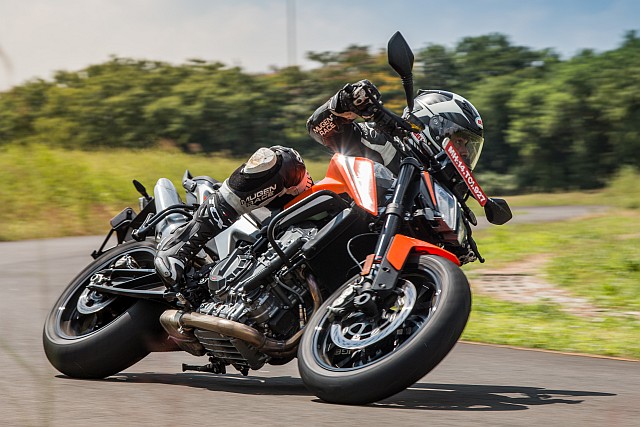
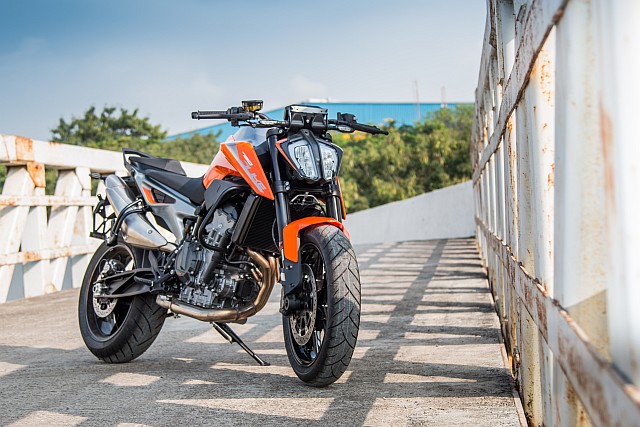
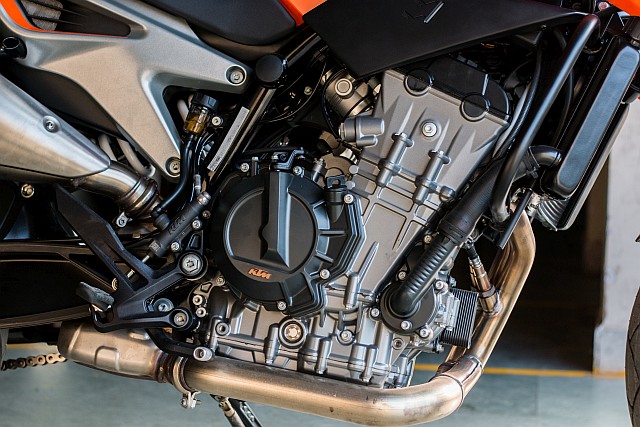
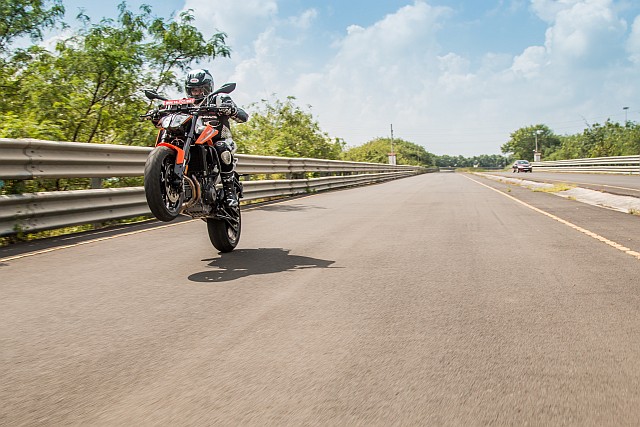
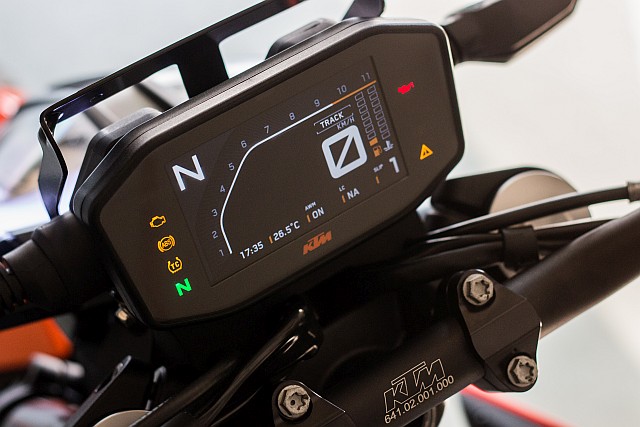
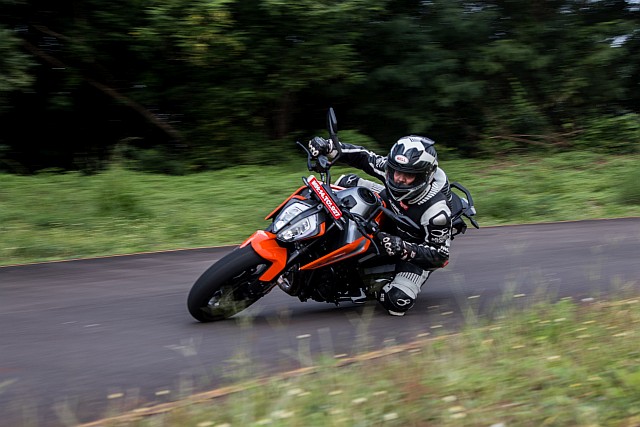

Leave a Reply